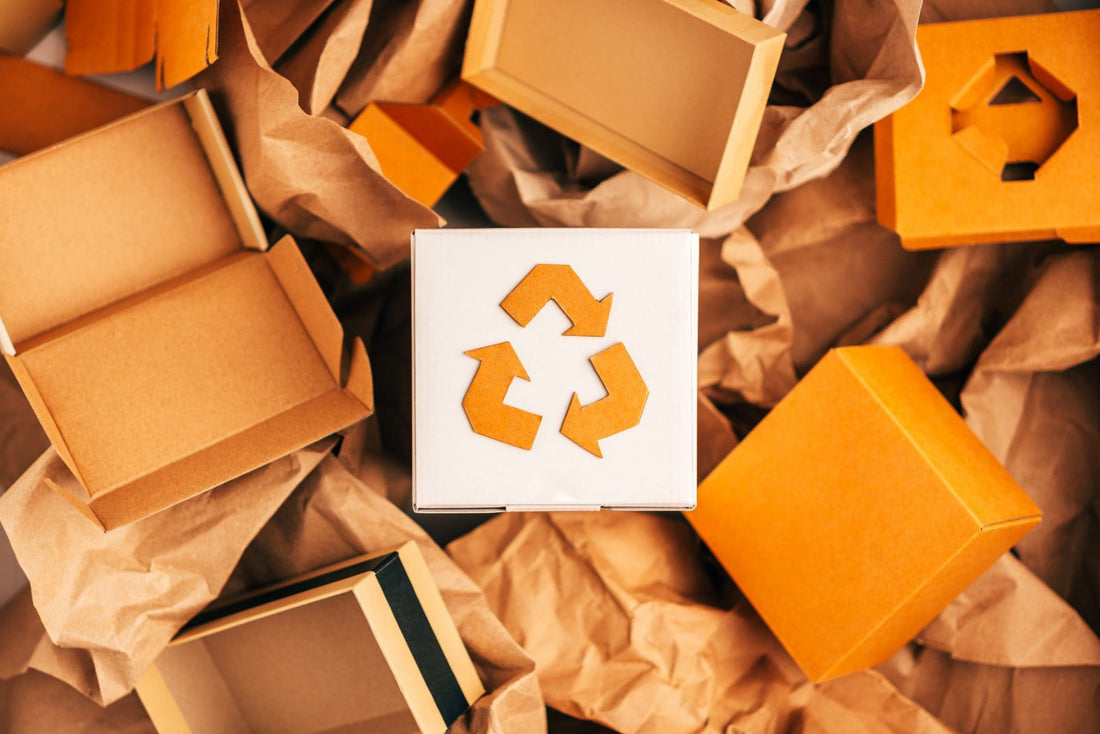In an increasingly globalized market, packaging standards are essential for businesses aiming to protect their products, comply with regulations, and build consumer trust. Packaging standards encompass a set of guidelines and regulations that ensure packaging quality, safety, and sustainability across industries. They play a critical role in quality assurance, logistics efficiency, legal compliance, and brand reputation, making them indispensable in today's competitive landscape.
What Are Packaging Standards?
Packaging standards are formalized guidelines and regulatory requirements designed to ensure that packaging materials and processes meet specific quality, safety, and environmental criteria. These standards help manufacturers, retailers, and consumers make informed decisions about packaging design, material selection, and handling practices. They are often established by regulatory bodies, industry associations, and international organizations, providing a framework for consistent and reliable packaging solutions.
Packaging standards are pivotal in:
- Quality Assurance: Ensuring packaging protects the product during storage and transit.
- Logistics: Facilitating efficient handling and transportation.
- Legal Compliance: Meeting regulatory requirements to avoid penalties.
- Brand Trust: Enhancing consumer confidence through safe and compliant packaging.

Why Packaging Standards Matter
Packaging standards deliver significant business value by safeguarding consumer safety, supporting international trade, and promoting sustainable practices. Compliance with these standards ensures products meet safety regulations, such as allergen labeling and food contact material safety, which protect consumers from harm. Moreover, adherence to packaging standards is often a prerequisite for entering global markets, where different countries impose varying packaging regulations. A sample packaging standards list includes FDA regulations, ISO certifications, ASTM testing protocols, and EU directives, among others.
Industry-Specific Packaging Requirements
Different industries face unique packaging challenges and regulatory demands:
- Food Packaging Standards: Governed by FDA regulations in the U.S. and Canadian food safety codes, these standards cover food contact materials, shelf-life labeling, and allergen disclosures to ensure consumer safety.
- Pharmaceutical and Medical Packaging: Compliance with ISO 11607, ASTM D4169, and FDA-recognized standards is critical to maintain sterility and product integrity.
- Cosmetic Packaging Compliance: Adheres to ISO 22715 and regional labeling mandates to ensure safety and transparency.
- Hazardous Materials Packaging: Must follow UN rules, Canadian Transportation of Dangerous Goods (TDG) standards, and ISPM 15 for wood packaging to ensure safe handling and transportation.
Global Standards and Certifications
Several global standards govern packaging quality and safety:
- ISO Packaging Standards: Include ISO 21067 (terminology), ISO 9001 (quality management), ISO 22000 (food safety), ISO 13432 (compostable packaging), and ISO 14000 (environmental management).
- ASTM Packaging Testing Standards: Cover ISTA protocols, ASTM D4169 for distribution testing, F88 for seal strength, and F1980 for accelerated aging tests.
- FDA Packaging Regulations: Encompass food, drug, and medical device packaging under CFR Title 21, including tamper-evident packaging and Generally Recognized As Safe (GRAS) materials.
- EU Directive 94/62/EC: Focuses on packaging and packaging waste management to promote recyclability and reduce environmental impact.
- BRCGS and GFSI-Recognized Programs: Provide global benchmarks for packaging material safety and quality, widely adopted in food and other industries.
- Eco-Friendly Certifications: Such as EN 13432, OMRI, TÜV, and EU ecolabels, certify compostable and sustainable packaging solutions.
Packaging Material Standards
Material standards ensure packaging suitability for specific applications:
- Food-Grade Materials: Include plastics, paper, and aluminum safe for direct food contact, complying with migration limits and safety criteria.
- Sustainable Materials: Emphasize recyclable, compostable, and biodegradable options to reduce environmental footprint.
- Application-Specific Standards: Tailored requirements for food, pharmaceutical, and hazardous materials packaging ensure appropriate protection and compliance.
Packaging Testing and Performance
Robust testing protocols validate packaging performance:
- ASTM/ISTA Test Protocols: Simulate real-world conditions like drop, vibration, and compression to ensure durability.
- Seal Strength Testing (ASTM F88): Measures the integrity of seals critical for product safety.
- Leak Detection: Uses dye penetration and tracer gas methods to detect package breaches.
- Accelerated Aging (ASTM F1980-21): Predicts packaging lifespan under various environmental conditions.

Environmental vs Sustainability Compliance
Sustainability is increasingly integral to packaging standards:
- ISO 14000: Provides a framework for environmental management systems in packaging.
- Extended Producer Responsibility (EPR): Requires producers to manage packaging waste, encouraging eco-friendly designs.
- Recycled Content Labeling: Mandates transparency in recycled material use to inform consumers and regulators.
- Eco Friendly Certifications: Validate packaging claims and support sustainable market positioning.
By adhering to comprehensive packaging standards, businesses not only ensure regulatory compliance and product safety but also enhance their brand reputation and contribute to environmental sustainability. Understanding and implementing these standards is vital for success in today's complex and competitive markets.
Labeling and Traceability
Packaging Label Requirements
- Overview of mandatory labeling rules for food, pharmaceutical, and cosmetic products.
- Importance of language compliance, such as bilingual labeling requirements in Canada (English and French).
- Key label elements: date codes (manufacture, expiry), nutrition facts, allergen information, ingredient lists, and regulatory symbols.

Barcode and GS1 Standards
- Introduction to GS1 global standards for barcoding and product identification.
- How barcodes enable efficient inventory management, sales tracking, and supply chain visibility.
- Role of GTIN (Global Trade Item Number) in standardizing product identification.
Tamper-Evident Packaging Regulations
- Regulatory requirements for tamper-evident features to ensure product integrity and consumer safety.
- Common tamper-evident solutions: seals, shrink bands, breakable caps.
- Compliance with FDA tamper-evident rules and other regional mandates.
Smart Packaging: RFID, NFC, IoT
- Emerging technologies in packaging for enhanced tracking and consumer engagement.
- Uses of RFID (Radio Frequency Identification) and NFC (Near Field Communication) in supply chain traceability.
- Integration of IoT (Internet of Things) for real-time monitoring of product conditions.
Packaging Traceability Systems (Batch Tracking, Serials)
- Importance of batch and serial number tracking for recalls, quality control, and anti-counterfeiting.
- Software and system solutions supporting traceability throughout the supply chain.
- Regulatory expectations for traceability documentation.
Packaging Structure, Compliance vs Regulation Mapping
Flexible vs Rigid Packaging Standards
- Definitions and examples of flexible (films, pouches) and rigid (bottles, boxes) packaging.
- Distinct standards and testing protocols applicable to each packaging type.
- Performance considerations and compliance challenges unique to each structure.

Compliance vs Certification
- Clarifying the difference between regulatory compliance and third-party certification.
- How certifications (e.g., ISO, BRCGS) add value beyond legal requirements.
- Introduction to a clear Packaging Compliance Checklist covering material safety, performance testing, labeling accuracy, and sustainability criteria.
Local vs International Rules
- Navigating the complexity of local regulations versus international packaging standards.
- Specific focus on Canadian packaging regulations:
- Role of the Canadian Food Inspection Agency (CFIA) in food packaging oversight.
- Health Canada’s guidelines on pharmaceuticals and cosmetics packaging.
- Environmental compliance under the Canadian Environmental Protection Act (CEPA).
- Tips for harmonizing packaging to meet both domestic and export market requirements.
Practical Guidance for the Food Industry
Benefits of Adopting Certified Packaging
- Enhancing product safety and shelf life.
- Facilitating market access and regulatory approvals.
- Building consumer confidence through verified quality and sustainability claims.

Implementation Roadmap: Assessment, Testing, Certification
- Step-by-step approach to adopting packaging standards:
- Initial packaging assessment and gap analysis.
- Conducting required performance and safety testing.
- Obtaining certifications and maintaining compliance.
- Importance of continuous monitoring and documentation.
How Kimecopak Can Help
- Overview of Kimecopak.ca as a trusted supplier of eco-friendly packaging solutions.
- Compliance with ISO, FDA, and Canadian regulatory standards.
- Custom packaging design, testing support, and certification assistance.
- Commitment to sustainability and innovation in packaging.
Resources and Standards Directory
- ISO.org – Access to comprehensive ISO packaging standards.
- FDA.gov – Official packaging regulations for food, drugs, and medical devices.
- ASTM.org – Detailed testing protocols and standards.
- CFIA – Canadian Food Inspection Agency resources on food packaging.
- Health Canada – Guidelines on pharmaceutical and cosmetic packaging.
- GFSI & BRCGS – Global food safety and packaging certification programs.
- GS1 – Global standards for barcoding and traceability.




